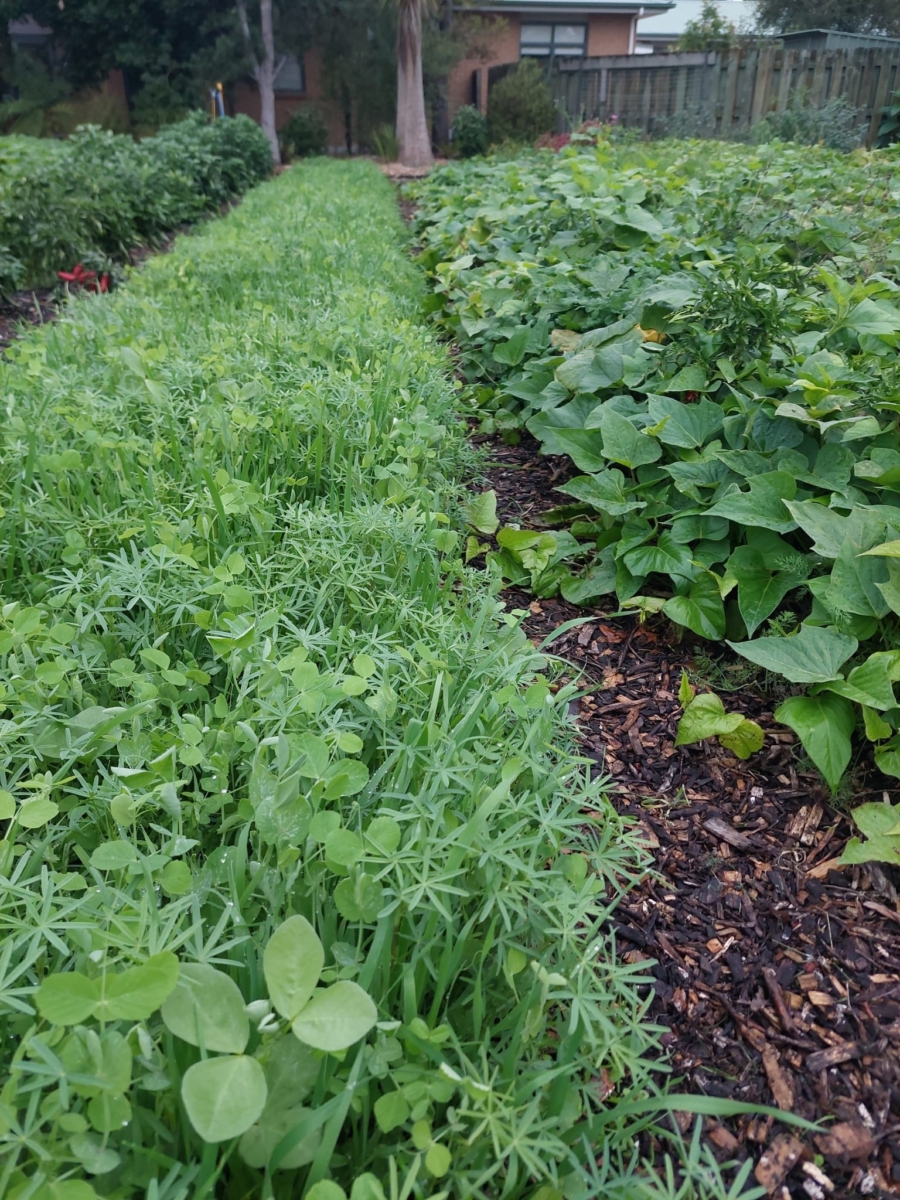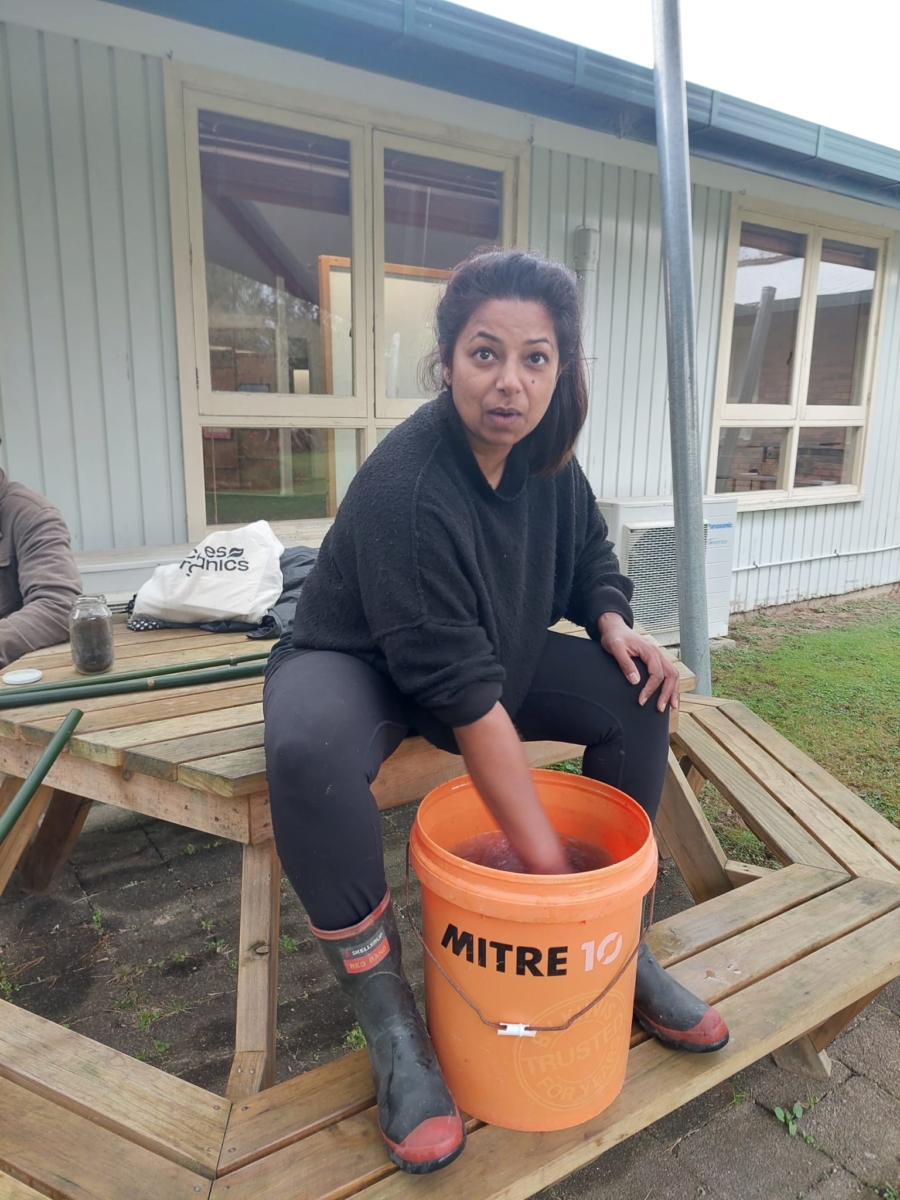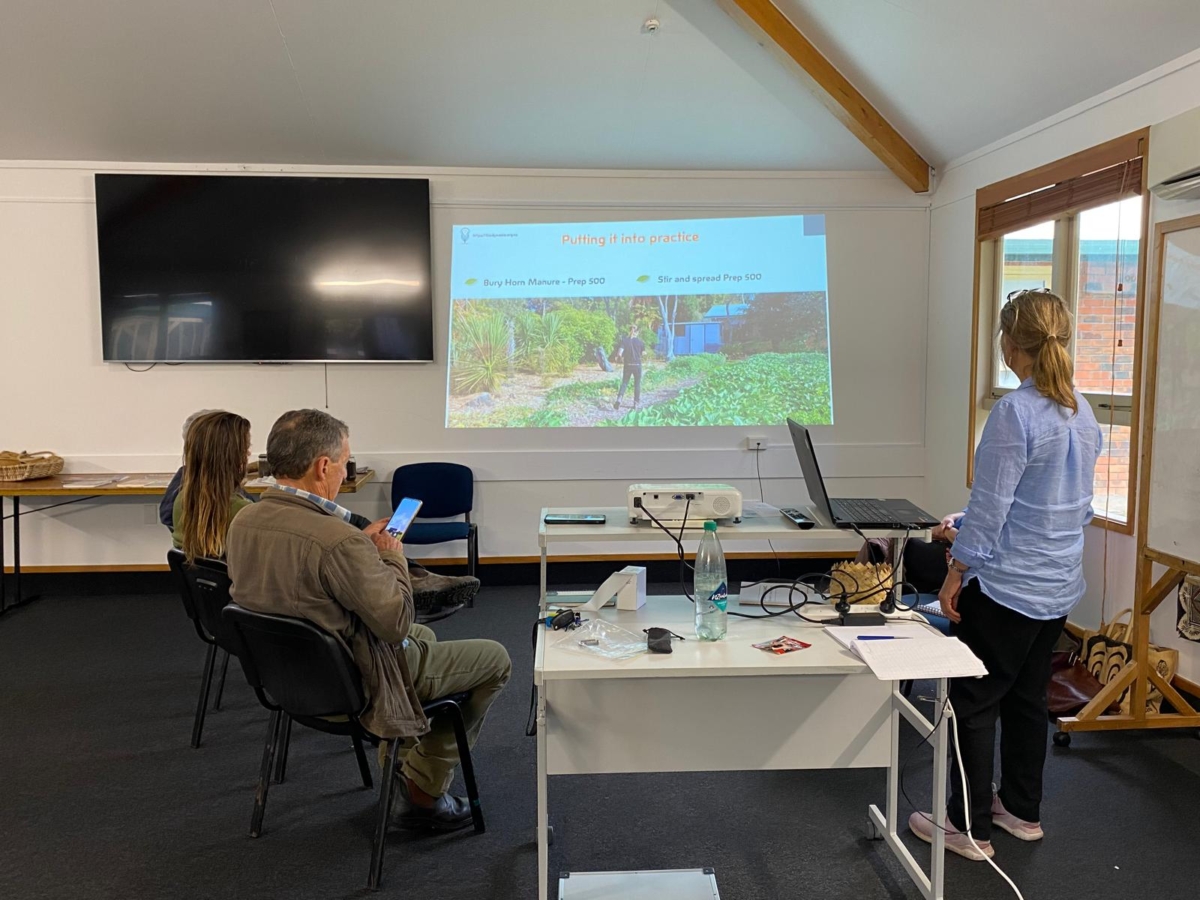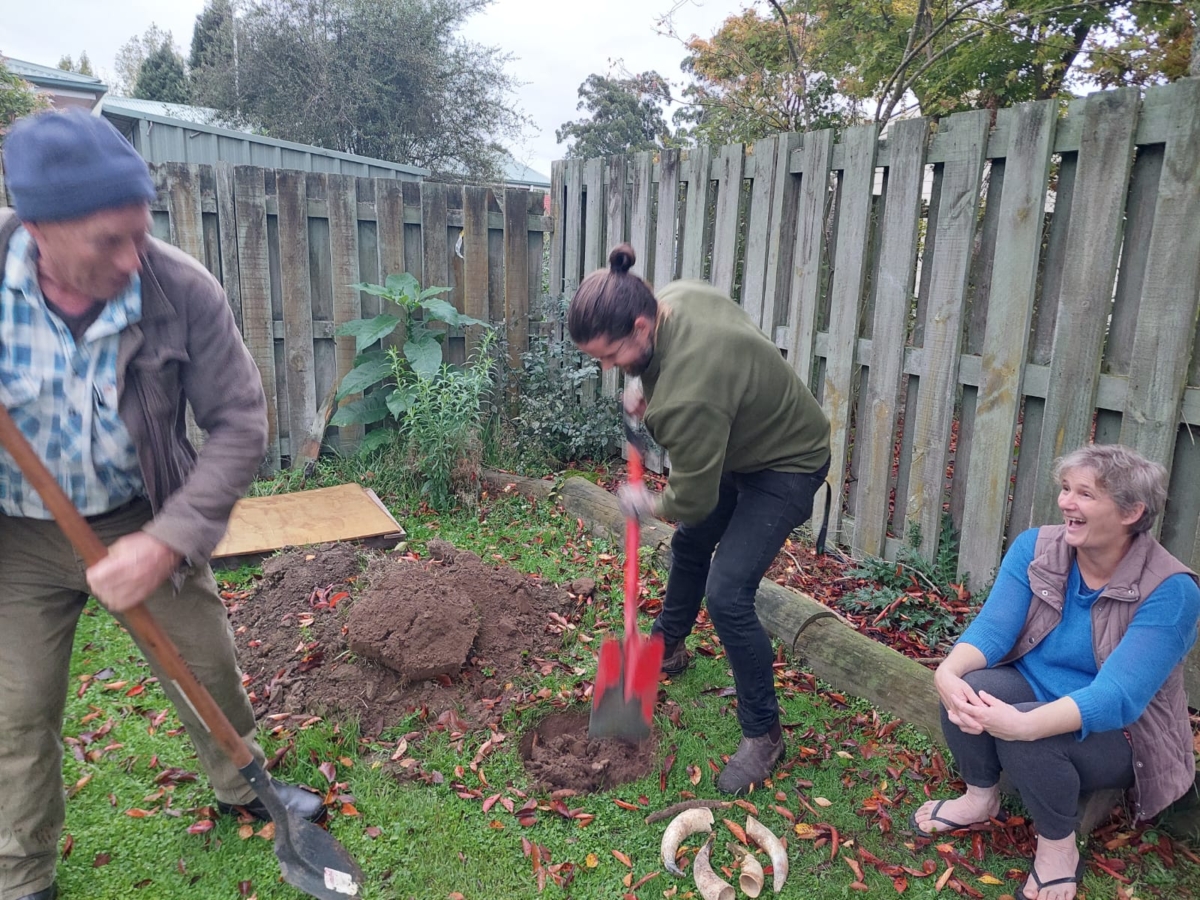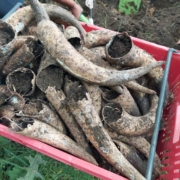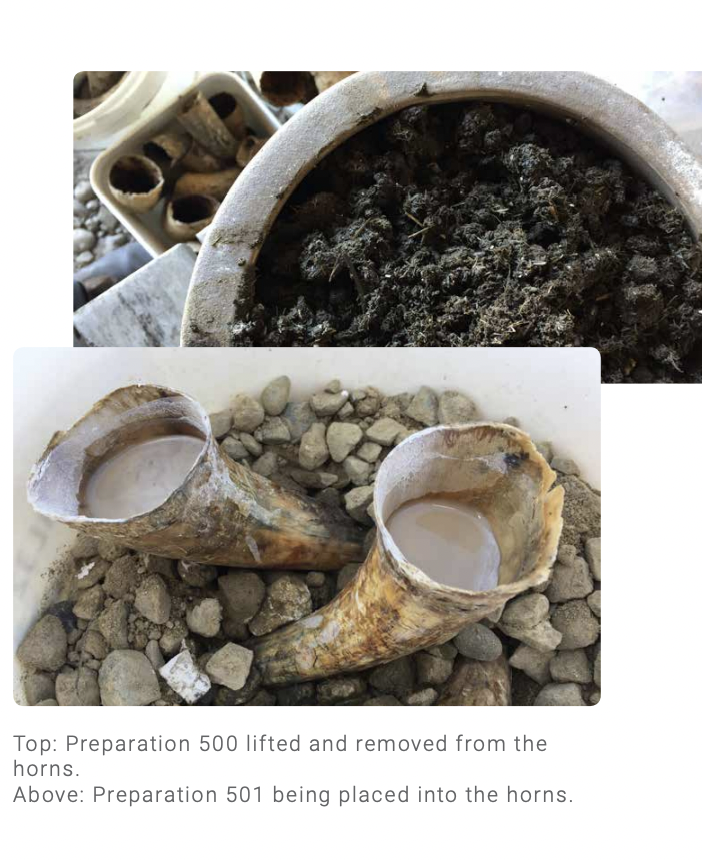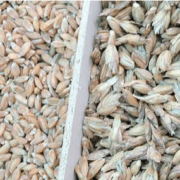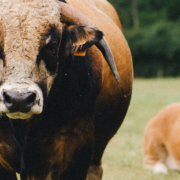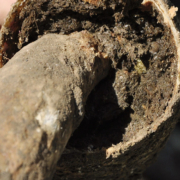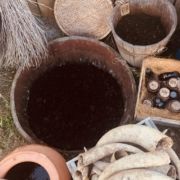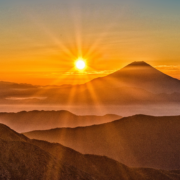A closer look at Cow Pat Pit
Gita Krenek investigates the origins of this popular biodynamic preparation, revealing how it’s now being used in a range of different ways.
Cow Pat Pit (CPP) is fairly widely used by biodynamic practitioners in New Zealand, Australia and India, less widely in other parts of the world. The focus of this article is not the practical making and spreading of CPP. Instead, I’ll be looking more closely into the background of CPP, and the diversity of ideas about it.
CPP is not one of the original preparations given by Rudolf Steiner as part of the Agriculture Course in 1924. Rather, it is a way of bringing some of these preparations – specifically the six preparations intended to be used in a compost heap – out onto the land, in situations where it is not possible to make or spread compost itself. Briefly, and to oversimplify, cow manure is mixed with ground eggshells and basalt meal, and ‘kneaded’ for one hour to activate or “dynamise” it. It is then put into either a half barrel that has been half sunk into the ground, or a pit dug into the ground and lined with bricks or timber. The compost preparations are inserted, the barrel or pit covered, and left for 3-4 months. At the end of this time, the manure has decomposed and can be spread onto the land – either as is (crumbled) or stirred in water in the same way as Prep 500, but for only 10-20 minutes.
Some people nowadays are modifying the original recipe to include up to 50% nettles. According to Chateau Monty(1) , doing so “appears to regulate plant health and growth”. But there is no research mentioned to support this rather vague statement. (For detailed instructions on making CPP, refer to the Biodynamic Association’s booklet Other Biodynamic Measures). So far, so good.
The cow manure, during its time in the pit, has become permeated by the energies of the compost preparations, allowing it to carry their effect when applied to the land. Why, then, the addition of eggshells and basalt? The prevailing reasoning within the biodynamic community goes like this: eggshells are high in calcium, basalt meal is high in silica. Steiner talked about calcium and silica being polar opposites in some ways. So therefore, we assume it must be about the calcium-silica polarity. What if I told you that basalt is actually low in silica? Sure, it’s composed of 45-52% silica, but geologically speaking, that is considered low. As a comparison, granite is 73% silica. If the primary aim was to include silica, wouldn’t a different rock much higher in silica, like granite, have been used instead? To understand why basalt and eggshells are included, we need to take a step back in time to the origins of the preparation. Who invented CPP, and why?
CPP has its origins in the atomic bomb tests of the 1950s, which released harmful radioactive fallout into the environment. One of the byproducts of nuclear fusion is Strontium-90, a radioactive isotope, which is absorbed by plants through their roots. When these plants are consumed by animals or humans, it can enter and accumulate in the food chain, posing serious health risks. Against this backdrop, a research Institute in Germany noted that plants growing in soils rich in calcium had less uptake of Strontium-90 than sandy soils high in silica.
This research was seen by Maria Thun, known for her pioneering work in biodynamic farming and the influence of constellations on plant growth. Inspired by it, Maria collaborated with German scientist Ehrenfried Pfeiffer to find a calcium-based remedy for radioactive fallout. They investigated 9 different substances rich in calcium to see if any could work via the soil to hinder the plants’ uptake of Strontium. Two of these nine were eggshells and basalt, and in the end, only these two were found to be effective. Did you notice that: the basalt was included for its calcium content. So actually CPP (or “barrel compost,” as Maria Thun called it) was invented as a carrier for calcium. Thun tried various methods for making the calcium available to plants on a large scale, including using cow horns in a similar way to Prep 500.
In the end, she found using the compost preparations through the medium of manure to be the most effective; which is not surprising given the ability of the preps to enhance microbial activity and speed up the breakdown of organic material in soil. Now the story gets more interesting. After the Chernobyl nuclear accident, an unnamed researcher reportedly travelled around Europe testing crops for fallout. He claimed that crops grown on farms using biodynamic preparations combined with CPP had lower levels of Strontium-90 compared to those that only used the biodynamic preparations without CPP.
This claim is sometimes cited in articles about CPP, with statements such as, “After Chernobyl, only farms using CPP were protected from radioactive damage.” However, there is no verifiable evidence to support this statement. The researcher, unwilling to have his name associated with the research, allegedly destroyed his documents, leaving the claim without any factual backing. Later documented field experiments(2) carried out after Chernobyl did not reveal any differences between organic soils, biodynamic soils, and soils that are treated with both biodynamic preparations and CPP. However, trial procedures were not watertight and the results may not be dependable. But Maria Thun was not finished with the question.
In 2006 a research trial(3) was carried out by the Institute for Nutrition Research in Braunschweig together with Maria Thun to find out whether “barrel preparation” (CPP) could reduce the uptake of uranium by plants grown in contaminated soil. High levels of uranium were measured in the grass roots of all plants in the trial; however significantly less uranium was detected in the green shoots of the plants treated with CPP compared to the control group. However, this wasn’t an entirely straightforward trial, as the mix the CPP plants were growing in contained 15% solid CPP. The plants were also sprayed with CPP and preparations 500 and 501.
Nevertheless, the results appeared to offer some validation for Thun’s ideas. Of sorts. Here in New Zealand, we don’t worry too much about nuclear fallout. So it raises the question: how crucial is it for us Kiwis to keep including these eggshell and basalt additives? What would happen if we didn’t? Now, let’s look at people’s reasons nowadays world wide for using CPP. What is CPP used for? Here we enter a veritable minefield. Everyone seems to have an opinion – some more fanciful than others. I think a bit of the “Chinese Whispers” effect has been at work, with details changing or becoming exaggerated as they’re passed along.
I think it’s helpful to remember that CPP is essentially decomposed cow manure acting as a carrier for the compost preparations and calcium. So whatever composted cow manure and the compost preps do, that’s what we can expect CPP to do. There is nothing really “magical” about it apart from that. I have found the most common sense description comes from the [International Biodynamic] Federation’s Best Practice Manual.(4) “The activity of micro-organisms in particular is stimulated by the preparation. It promotes the breakdown of organic matter to humus in the soil, compost and manure; promotes soil life, improves soil structure and water retention. Microbes also play an important role in making nutrients available to plants and increasing their resistance against disease.” Pretty well everything stated above follows from that first sentence.
Out of interest, I read 12 other articles about CPP online. Many people concurred with the above points, but there were some other interesting ideas too:
• Prevents fungal and pest attack
• Encourages vital processes in plants
• Introduces a wide range of beneficial organisms
• Provides essential nutrients
• Increases yield or promotes plant growth
• Helps warm soil in early spring
• Improves paramagnetic & conductivity qualities of soil
• Root initiation of cuttings
• Root nodulation & symbiosis with nitrogen-fixing bacteria in legumes
• Neutralises radioactive fallout on soil and plants
• Better taste and colour
• Intensive use of CPP allows for more directed use of Prep 500
• Supports earthly (lime/calcium) and cosmic (silica) forces/processes.
• Makes soil receptive to formative forces
• Mediator between cosmic and terrestrial
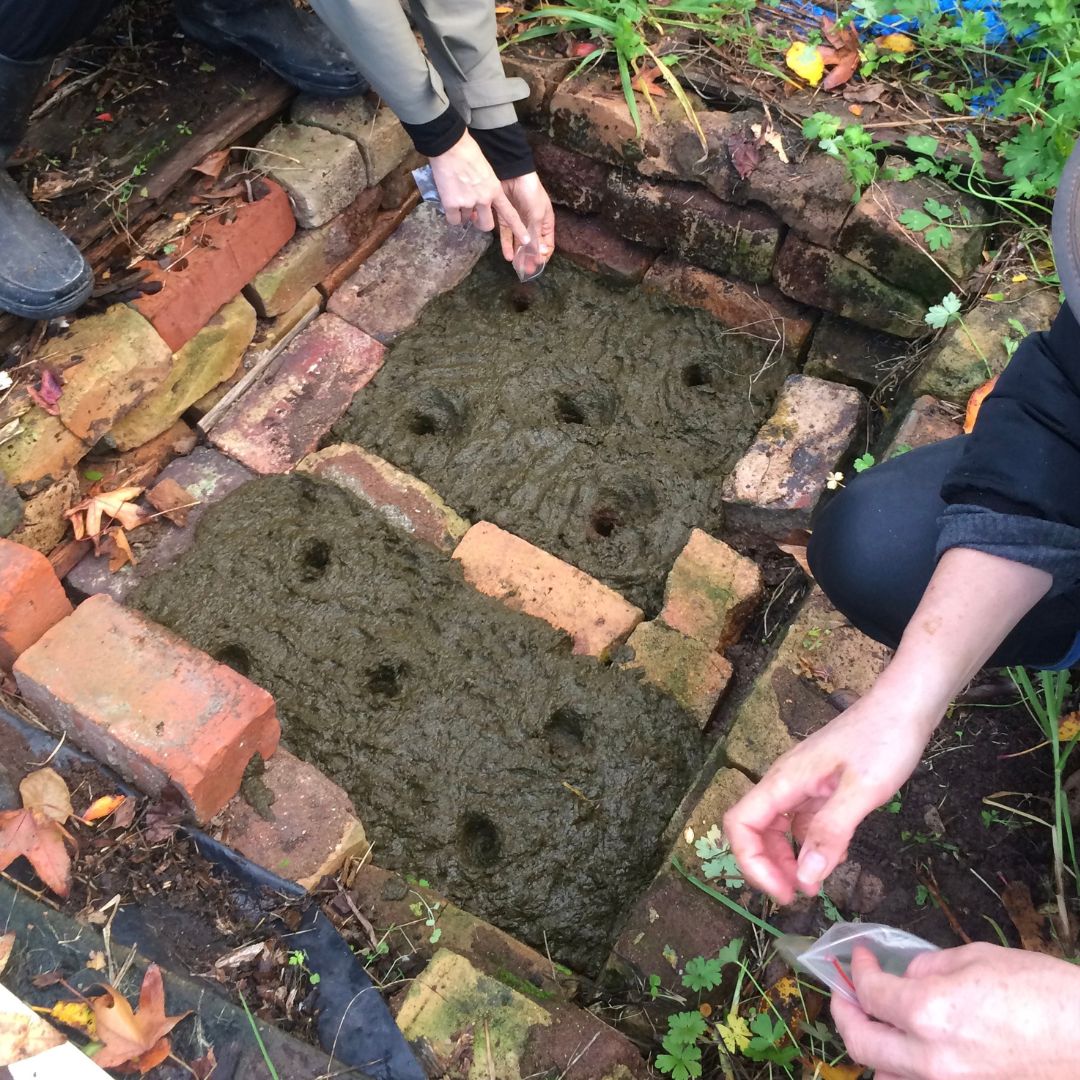
Needless to say, none of these claims were supported by reference to actual research. In fact, I did not find a single research paper online with regard to CPP apart from the fallout experiment above and one instance of seeds soaked in stirred CPP mentioned below. Some of the claims are actually things that Prep 500 or 501 are known for – like root nodulation, taste, and colour. Since everyone will likely be using preparations alongside CPP, how are they determining which results can be specifically attributed to CPP? What’s also interesting is that none of these claims seem to be found in articles about the compost preparations themselves. Somehow, CPP has acquired in the minds of many people these additional benefits beyond those of the cow manure, compost preparations, and calcium it contains, turning it into way more than the sum of its parts.
How do we separate fact from fanciful imagination? In the absence of scientifically conducted trials, it’s anyone’s guess. For example, one article claimed that CPP “increases yield,” based on the fact that after using CPP, their neighbour harvested more bales of hay from their paddock than the previous year. It may well have been due to the CPP – or not. Or partly. We don’t know.
But once reported as a “fact” on the internet, the claim that CPP “increases yield” quickly spreads and becomes increasingly cited as a benefit, eventually being regarded as an established and irrefutable truth. This idea is passed along from person to person, article to article, gaining traction even without solid evidence to support it. I think it’s important to apply one’s own critical thinking and decide whether an unsubstantiated claim makes sense, and fits into the broader context. Just as there is a huge variety of ideas about what CPP can do, many people have also come up with creative ways to use it. This isn’t a criticism – innovation is great!
In fact, if you remember that the compost preparations stimulate breakdown processes by fostering microbial activity, and that composted cow manure is teeming with microorganisms, many of these uses start to make sense. Is there anything you can’t use CPP for? See below.
Again, some of these suggestions, in my understanding, are things we would traditionally use Prep 500 for, such as applying after mowing, dipping cuttings and seedlings. My final question around the use of CPP is this: why is the stirring time limited to just 10, 15, or 20 minutes (depending on who you ask)? Presumably Maria Thun herself came up with this number (that is to say, one of them – which one?). How did she arrive at it? Is it about energy transfer, similar to Prep 500, which requires a full hour of stirring, or is the goal simply to dilute the material? So, what should we believe and how should we use CPP? In my opinion, it doesn’t really matter. Whether you use it as a foliar spray, incorporate it into your potting mix, or dip plant roots in it, it won’t do any harm, and may do some good. However, it might be worth reflecting on why you’re doing what you are doing. Is it just because someone said it’s a “Good Thing” to do? Or because you understand what’s behind the process? Or perhaps you don’t wish to get too tangled up in overthinking it, and just get on and make it and use it. Ultimately, as with all things biodynamic, it’s over to you.
What you can do with CPP – a summary of internet and local advice
• Apply twice yearly to all garden beds or fields.
• Add to Preparation 500 for the last 20 minutes of stirring.
• For adding compost preparations to a heap, encase each one in a small wad of CPP.
• Sprinkle directly onto layers of materials when making a compost heap instead of adding the compost preps to the heap.
• Apply CPP when turning in green manures.
• Apply to pastures after grazing or after cutting for hay.
• Apply to soil around young trees before mulching.
• Crumble directly or sprinkle stirred prep onto animal litter or anything that has a bad rotting smell.
• Dissolve into barrels of liquid manure instead of adding the compost preps.
• Add a handful to each barrow load of potting mix.
• Soak seeds in stirred CPP (large seeds) or CPP slurry (small seeds) prior to sowing (researched5).
• Lob cricket ball sized lumps into dairy farm effluent ponds.
• Add to compost tea.
• Soil inoculant before a crop
• Scatter solid CPP finely into furrows before sowing seed.
• Foliar spray or ground spray to supply plants with nutrients in an available form.
• Foliar mist or compost tea to prevent fungal & pest attack.
• Soak seedlings prior to transplanting.
• Spray bark of trees to stimulate cambium growth.
• Paint onto tree trunks as a component of tree paste.
• Apply as thick paste on pruning cuts and after grafting or coppicing.
• Soak rooting tips of cuttings.
• Add to vase water for longer-lasting cut flowers.

Special thanks to Floris Books, publishers of Maria Thun’s Results from the Biodynamic Sowing and Planting Calendar, for providing photos of Maria Thun. Gita has been involved in biodynamics since 1980, when she and her husband took over a large sheep farm in North Canterbury and converted it to biodynamics.
Gita retired to Golden Bay (Top of the South Island) in 2019 where she takes care of a large vegetable garden and some fruit trees. She can be reached at gitakrenek@gmail.com
(1 )A website about growing wine biodynamically worldwide; see also Barrel Compost, William and Lisa Shock, in Acres USA Feb 2010.
(2 )Radiation and the prosperity of agriculture in Biodynamics spring 2014.
(3) Tackling Nuclear Fallout: 16th international symposium of the international scientific centre of fertilisers: Effect of biodynamic soil additives on uranium uptake by plants.
(4) But bear in mind that the Best Practice Manual is nothing more than a collection of what experienced practitioners all over the world say and do. For example it states a couple of times “Peter Proctor says that…” It does not purport to say what is “correct” and it does not reference research. In fact, in the biodynamic world, there is no “correct,” as a comprehensive survey of international practice has shown. 5 Seed soaks with the biodynamic preparations, Hugh Courtney, in Biodynamics winter 2004. See also Biodynamics NZ website





